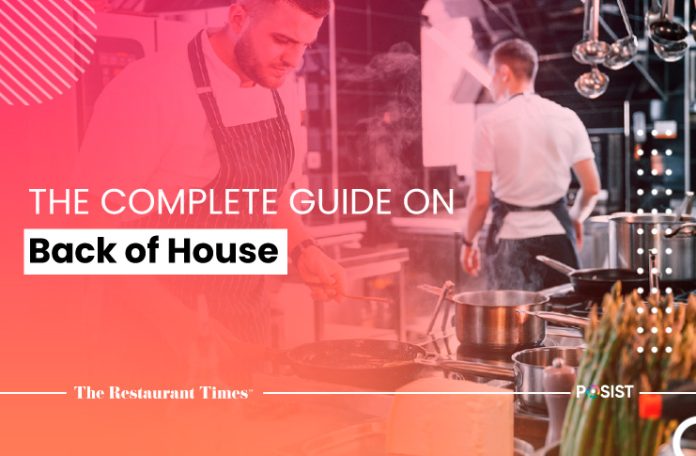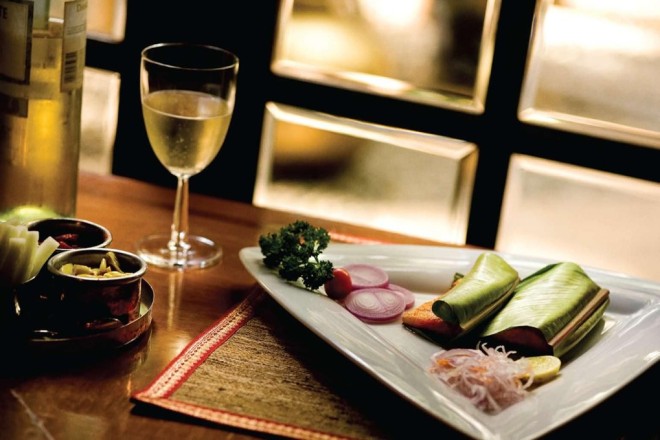The back-of-house (BOH) at a restaurant is the behind-the-scenes area of the restaurant — it works like an engine and keeps the restaurant going. It is a busy place with hot surfaces, chaotic movements, staff shouts, and cutlery noise. While it is not visible to the customers, the restaurant’s services get hampered without back-of-house.
A restaurant can improve the BOH operations to increase efficiency and overall performance. For example, you can streamline kitchen processes, optimize inventory management, provide staff training, and implement scheduling systems by focusing on your BOH. It can also help reduce labor costs and increase the speed of food preparation.
Continue reading to understand the back-of-house of a restaurant, how it functions, the different back-of-house positions, and tips on how to manage back-of-house operations.
Why is Back of House Important?
The back-of-house team keeps everything running smoothly behind the scenes, often unnoticed by guests. They hardly ever interact with the guests because they work in offices away from the guest areas or rooms when the visitors aren’t there.
The back-of-house area is typically a staff-only zone. However, tours may occasionally be given to the general public. It is where food is prepared and stored, and it frequently has additional staff spaces like a break room and a changing area.
Staff members such as cooks, dishwashers, and callers work in the back of the house, where they are usually unnoticed by the general public. Additionally, most kitchens have a rigid hierarchy in the back of the house, with each employee performing a particular duty.
The Back of House Lingo
The hustle and bustle of the back-of-house, the chaos that sustains the front-of-house (FOH), and the sheer urgency, mingled with various types of noises, create a different word in and of itself. And, well, every world needs its own lingo. Okay, not a complete language per se, but some code words that make communication easier. Some of the terms are:
- Behind: Staff shouts ‘behind’ at each other when navigating the kitchen, so the person knows someone behind them, probably carrying a dish. The aim is to avoid a collision.
- 86: a dish is 86’d from the menu when its ingredients are unavailable.
- Window: Windows are where the food disappears to go to the front of the house once it is plated.
- In the weeds: The kitchen staff is in the weeds when the demand is too high, and they struggle to keep up with it.
- On the fly: A last-minute dish is on the fly fish dish — it wasn’t planned previously, but now it is needed to appease the guests.
Functions of Back-of-House
The primary responsibility of a restaurant’s BOH is to prepare delicious food in the kitchen for the customers. That being said, it is also the responsibility of staff working at the back-of-house to manage the following:
- Purchase raw material
- Food production
- Storage and maintenance
- Sales and marketing
- Recruitment and training
- Accounting and payroll
- Security
Positions in Back-of-House
There are various types of restaurants, and each has its own set of requirements regarding kitchen staff and employees. However, here are some of the top positions in the back-of-house that you’ll need to recruit for:
- Kitchen Manager: Ensures other BoH staff carry out their responsibilities and follow protocols.
- BOH Manager: The BOH manager is in charge of recruiting, training, and supervising staff, so they must be familiar with the standards for each position.
- Head Chef: The head or executive chef oversees every member of the kitchen staff and every morsel of food that is prepared there. They supervise other chefs, create menus, and handle food order costs.
- Sous Chef: They are second to the head chef and assist them in preparing dishes, or they might occasionally take over when the head chef is absent.
- Line Cook: Depending on the position and dishes of the restaurant, there are different types of line cooks, such as pastry chefs or fry cooks.
- Kitchen Caller: A kitchen caller announces incoming orders to chefs and instructs them on what to prepare and in how much time. During peak hours, the head chef might also act as a caller.
- Dishwasher: As the name suggests, dishwashers clean dishes, utensils, and glasses as soon as they arrive. They are generally responsible for ensuring the cleanliness of all cooking utensils.
- Expeditor: They coordinate food orders and ensure they are properly prepared and delivered to the customer on time.
- Delivery Driver: They are responsible for delivering packages and food parcels to different locations within a specified period.
How to Manage Back of House
As the manager of your restaurant, you should effectively manage the back-of-house to improve customer satisfaction and ultimately boost revenue. Here are some tips to help you manage your restaurant’s back-of-house operations:
- Invest in Inventory Management: The first step in ensuring kitchen staff access to ingredients is implementing an inventory management system. Doing this will also reduce food waste during processing and future purchase decisions.
- Efficiently Prepare the Kitchen: The BOH team should also ensure that the kitchen is organized for efficiency and accessibility. To prevent cross-contamination, it needs to be well-organized, with prep stations separated for meats and vegetables. Additionally, supplies should be ready and within reach of the chefs. The kitchen must also always be kept spotless.
- Communication Between FOH and BOH: To ensure there are no errors in orders and customers receive exactly what they requested, the front-of-house and back-of-house staff of a restaurant need to communicate seamlessly and effectively. For example, training them as a group can help them understand who is in charge of what roles. This will also increase the likelihood of an employee being able to multitask in unexpected situations.
- Motivate Staff Members: Your employees are your greatest asset when running a restaurant. If one performs poorly or makes a mistake, your restaurant may suffer. Therefore, you can give them a chance to gain knowledge about new cooking trends and ways to better perform their current duties. Additionally, be sure to recognize your staff’s accomplishments and offer constructive criticism so they can find ways to increase the quality of their output.
Technology in Back-of-House
When new and cutting-edge technology is released annually to enhance a restaurant’s operations and dining experiences, it is no surprise that technology plays a significant role in the restaurant industry. The following are some examples of technologies that enhance the back-of-house activities in a restaurant:
- Kitchen Display System: A Kitchen Display System (KDS) integrates seamlessly with your point-of-sale (POS) system, front-of-house, and kitchen staff to ensure that great meals are delivered on time.
- Supply Chain Management Software: With the aid of supply chain management software, acquisition groups can see the current stock needs for each outlet, make purchase orders based on those needs, and send them to related vendors.
- Digital Thermometers: Digital thermometers have surpassed analog thermometers in terms of safety and accuracy. Also, a chef can receive automatic food alerts using their mobile device and a digital food temperature reader.
- Inventory Management Software: Managers can uncover their company’s hidden food costs using inventory management software. They can also monitor stock levels and real-time inventory consumption across different outlets.
Checklist for BOH employees
Here’s a checklist of the daily, weekly, and monthly activities of the BOH personnel:
Daily Checklist
The daily checklist of staff looks something like this:
- Ensure surfaces are disinfected
- Maintain a clean floor
- Get rid of the trash
- Ensure that meat slicers, can openers, and other tools are clean
- Make sure that the kitchen equipment, such as the fryer, range, and grill, is clean
Weekly Checklist
The weekly checklist of BOH staff looks something like this:
- Sanitize walk-in freezers and refrigerators
- Bring the deep fryer to a boil
- Keep oven racks, doors, and walls clean
Monthly Kitchen Checklist
The monthly checklist of staff looks something like this:
- Keep the ice maker clean
- Keeping coffee makers clean
- Keep the walls clean
- Make sure grease traps are empty
- Make sure the vent hoods are clean
Conclusion
A restaurant’s success depends on how well the BOH and FOH collaborate. However, harmony can be difficult to achieve, particularly when there is poor communication among staff members. This is why implementing a real-time communication system between the front-of-house, and the back-of-house can keep the restaurant functioning seamlessly.

















